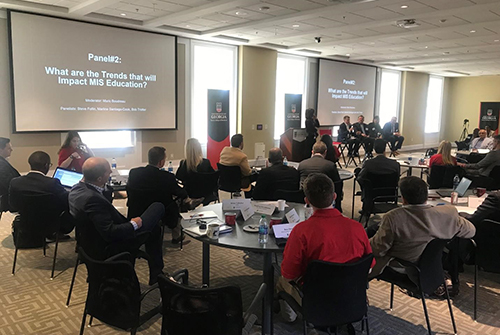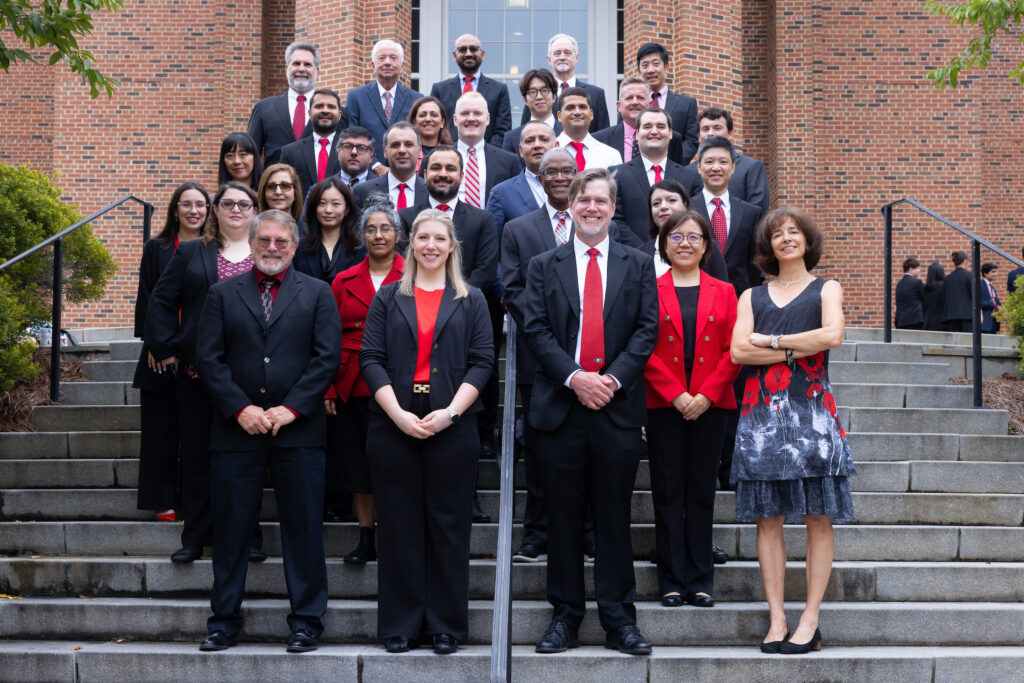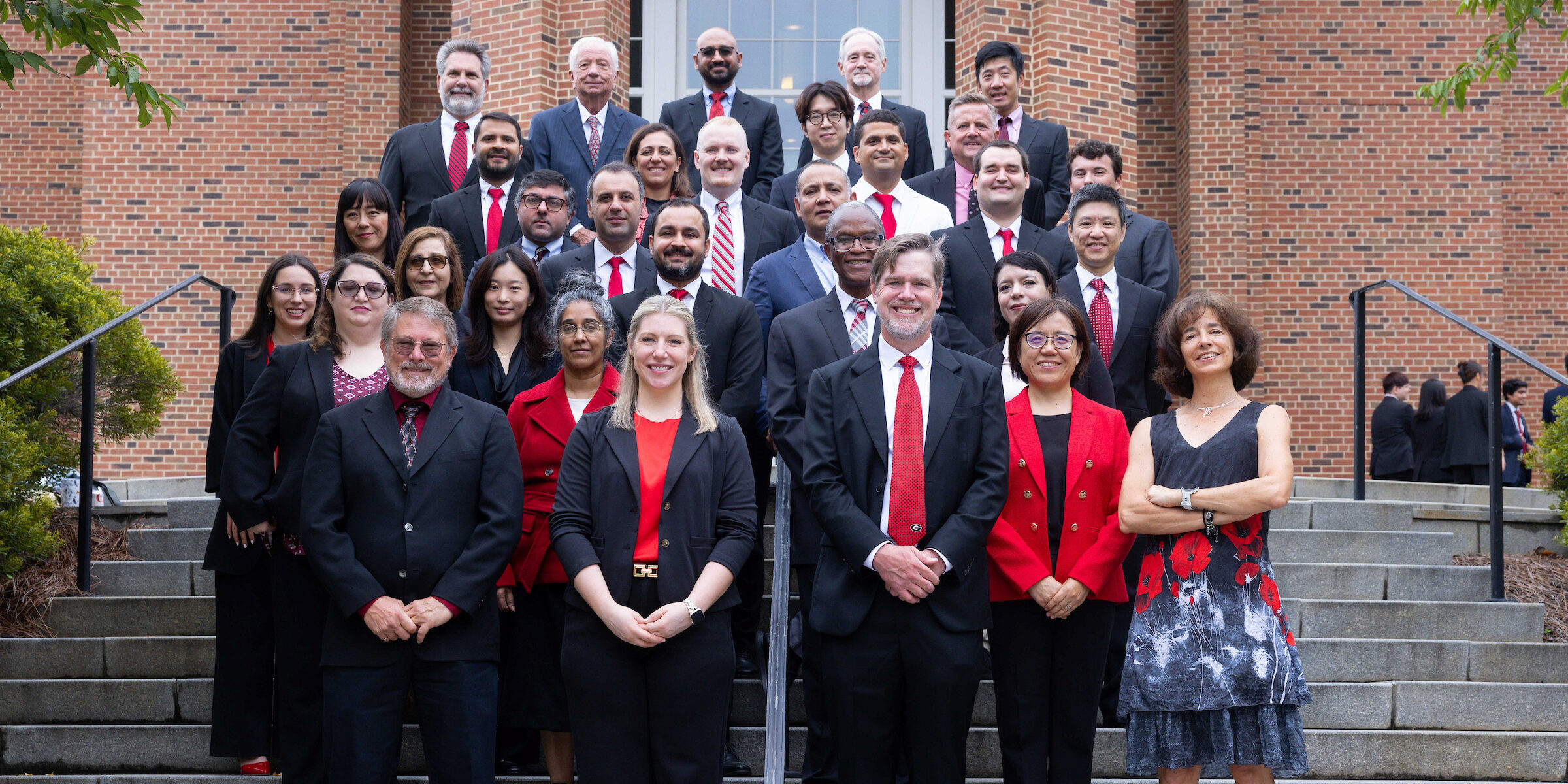Introduction
In the interest of providing a useful, interesting and fun chronicle, what follows is a history of key events in the establishment and evolution of the MIS program at the University of Georgia. This history is based on personal recollections, discussions with those involved, and assorted documents.
Please add to its richness by sending interesting/humorous/insightful remembrances about the program to Hugh Watson.
The Early Years
In 1969, the Departments of Management and Accounting created a program called Business Systems. Though it was a joint program, it was administered and quickly assimilated by Management. The program’s name was changed to Management Information Systems in 1971, becoming one of the first such programs in the country.
In 1970, Brooks Hall was being renovated, and the Management Department was moved to the White Avenue Building. It’s impossible to find now — it was torn down in 1972. The Mayflower Cafe, which recently closed, was one of the most popular places for lunch with its “meat and three” options. At the time, the Last Resort wasn’t a popular restaurant, but rather, a music venue with the same name.

The Department of Management contained multiple programs — Human Resources, Organizational Behavior, Business Strategy and Operations Management. Each had its faculty and curriculum. The first MIS faculty members included Ellis Scott, Larry Rausch, Asterios (Stell) Kefalas and Hugh Watson. Some of the MIS courses, such as Systems Analysis and Design, continue today, while most of the others changed. For a programming language, students took COBOL, taught as a service course by the Computer Science Department.
The placement of MIS in Management worked well. Howard (Ted) Smith was a beloved department head who created a collegial environment that continues today. Dick Huseman, Archie Carroll and Bob Gatewood followed Ted as department heads and made many contributions. The socio-tech nature of today’s program was influenced by its placement in Management. Over time, however, as the MIS program grew, it had to compete for resources with other Management Department programs, a factor in the decision to create a separate MIS department.
The IBM MoIS Grant
In 1984, IBM announced a $27 million grant to support teaching and research on the management of information systems. In a highly competitive, multiple-round selection process, the MIS program at Terry was one of 13 schools (which included MIT and the University of Minnesota) selected to receive $1 million in cash, $1 million in hardware and unlimited software. The grant program ran from 1985-1990.
Being a grant school was a tremendous boost to the program. It provided resources for teaching and research that otherwise would not have been available. For example, the Smart Office, a lab for teaching and research on the office of the future, was constructed in Caldwell 201 and an associated lab was built in Caldwell 205. The grant provided credibility for the MIS program throughout the country, the university, and the college. Using grant money, many of the leaders in the MIS academic field (e.g., Paul Gray, Gordon Davis, Jack Rockart and Jay Nunamaker) came to UGA for the first time and experienced what makes Athens and MIS at Georgia so special. Grant money also allowed additional faculty to be hired.
The MIS Advisory Board
The board was created in 1984 to serve as a mechanism for interacting with the business community, especially with those companies hiring our students. Hugh Watson initiated and continues to coordinate the board and most of the first board members were people interested in MIS education at Georgia. The board meets in the fall and spring to discuss the curriculum, changes taking place in the field, recruiting students, research opportunities and more. Each year, individual and company-sponsored scholarships are awarded to our best students.

Over time, the board and its activities grew. When the Terry College of Business facility in Atlanta opened, an Atlanta board meeting was created. At the first meeting, undergraduate students Viji Kannan and Jessica Marceau went to help with the meeting, and their assistance and popularity with Board members led to the inclusion of student representatives on the board. It remains one of the best board-related decisions made. Board members also speak to classes and attend various student events. The board is well-known in the academic and business communities.
SMIS
The Society for Information Management (SIM) is the leading professional organization for senior MIS managers. Previously, it was called the Society for Management Information Systems. In 1984, the college applied to create an Atlanta SMIS Chapter with faculty and student members. The application was turned down because it didn’t fit the model. Later, an Atlanta Chapter was created with Georgia’s MIS faculty in leadership roles. The idea of a student professional organization stuck, and was later created and called SMIS, which has no formal affiliation with SIM.
Hugh Watson was the first faculty advisor for SMIS, but Tex Carr, John Schleier, David Van Over and Bob Brown took turns in later years. Hugh Head was the first SMIS student president. From the beginning, the leadership for SMIS came from the student officers. This philosophy and approach was practiced by Mark Huber, the organization’s faculty advisor since 1999. SMIS is arguably the best student professional organization on campus. This excellence is validated by SMIS being selected by the Association for Information Systems to receive its first student chapter of the year award in 2010.
Faculty and Students from Management Science
During the late 1970s and early 1980s, the Management Science Department developed a competing program for MIS. Due in part to the resources and recognition from the IBM MoIS grant, the MIS program thrived. Ultimately, the Management Science Department was disbanded and five of its faculty — Janine Aronson, Bob Brown, Pat McKeown, Andy Seila and Ton Stam — joined the MIS Department. This infusion of talent facilitated the further growth of the MIS Department. We consider all Management Science graduates to be part of the MIS family.
The Brooks Hall Fire

Brooks Hall was home to the MIS program and the Terry College of Business for many years. This changed for two years beginning in 1995 when a fire erupted on the roof and caused the worst fire in the history of the University of Georgia. The fire raged throughout the day as hundreds of people watched firemen try to put out the blaze.
Brooks Hall was closed while renovations were made and the MIS program was moved to the Dance Building on South Campus. A lingering memory is the sound of the classes’ music and dancing. The MIS faculty soon realized how much they loved North Campus and its proximity to downtown. We quickly tired of eating at Snelling Hall and the Georgia Center for Continuing Education.
The MIS Department Is Created
Due to the strong economy, dot com boom, and Y2K, there was rapid growth in MIS enrollment. The program outgrew the Department of Management. With the encouragement of Terry Dean Al Niemi, the decision was made to create a separate department. Pat McKeown was named the first MIS Department head in 1999. As a stand-alone department, the program became more entrepreneurial.
Graduate Programs
A small cohort of students started in the Master of Business and Technology (MBT) program on the Georgia campus in Fall 2000. It was initially a joint offering of MIS, Computer Science and the New Media Institute. In 2004, the program was moved to Georgia Gwinnett College as a part-time program offered by the MIS Department. To meet increasing demand outside the Atlanta metro region, the MBT program in 2014 was retooled to be 100% online delivery. Craig Piercy has been the program’s director since 2006. In 2024, the MBT program was ranked 4th among all universities and 2nd among public universities in specialized master’s in business programs by U.S. News.
The MIS PhD program is one of the oldest, largest and most successful in the country. The first graduate was Michael Parks in 1973, and over the years, there have been more than 80 graduates. They have gone to prestigious universities, such as MIT and the University of Virginia, become chaired professors and held positions as department heads and deans. In the early days, Management and Computer Science faculty were very helpful in serving on dissertation committees. The involvement of Computer Science helped foster a good relationship between the two programs that continues today.
The Boom-to-Bust Cycle
The boom of the late 1990s turned into a bust as the economy and IT hiring and spending were cut. Student enrollment in MIS is tightly linked to the job opportunities for its graduates; consequently, the number of MIS majors declined dramatically. Much of the efforts of department heads Dale Goodhue and Rick Watson were to increase enrollment. They ran ads on the campus bus system to attract students.
Fortunately, Dean George Benson continued to support the MIS program through the lean years. Faculty positions were lost, but support for the department never wavered. This support was also extended by Dean Robert Sumichrast. Both deans had tenure in MIS even though their backgrounds were in operations management.
Over the past few years, MIS hiring and enrollment have grown significantly. Maric Boudreau successfully led the department during this period. The demand for the MIS major remains at an all-time high and is at the top for job placement and starting salary.
Leaving Brooks Hall
From 1929-2017, Brooks Hall was home to the business school. As student enrollment and faculty grew, rooms were cannibalized for office space and classes were taught in Caldwell Hall, Sanford Hall, and other areas of campus. There was a need for a larger, state-of-the-art home for the Terry College of Business.
Through fundraising efforts and state appropriations (a 50-50 private/public split), the money was raised to build the Business Learning Community (BLC) at the intersection of Lumpkin and Baxter streets. Correll Hall was the first BLC building, opening in 2015. The second phase included Benson Hall, Amos Hall and Moore-Rooker Hall, which opened two years later. The fourth floor of Benson Hall is home to the MIS Department. In 2019, Ivester Hall and Orkin Hall opened and completed the world-class facilities to prepare the next generation of business leaders.
With the opening and location of the BLC, Miller Learning Center, Tate Center and Bolton Dining Commons, the center of campus activity (and traffic) shifted to the Lumpkin-Baxter intersection.
COVID-19
In early 2020, COVID-19 appeared in the US, and just before students returned from spring break, the decision was made to suspend classes for two weeks and resume with online instruction. While this was challenging for faculty and students, many of the MIS faculty taught online before in the MBT program and all were familiar with online technologies. It also helped MIS students were comfortable with learning and using new technologies. Even in that unusual year, enrollment in the MIS major continued to grow.
Our department head, Maric Boudreau, worked hard to address the challenges created by the virus and mitigated its effects. One example is many students lost their summer internships and Dr. Boudreau worked with a variety of organizations, including nonprofits and small businesses, to connect them with students who were willing to work for free to gain work experience.
In fall 2021, there was a return to in-person classes and events. While this was welcomed by all (Zoom fatigue), it was learned that some things, such as interviews, can be done more easily and efficiently virtually. It will be interesting to see the lasting effects of COVID-19.

Greater Opportunities
Dean Ben Ayers continues the history of Terry deans supporting the MIS department. He encourages the department’s entrepreneurial spirit and asks the department to take the lead on several key initiatives, including analytics. Responding to a demand in the marketplace, the department created areas of emphasis in data analytics and information security management, and a certificate program in FinTech, in addition to the usual MIS coursework.
Joining SMIS, other MIS student organizations have emerged, including Women in Technology, the Society of Business Intelligence, Terry FinTech, and the Society for Cyber Security. These organizations provide students with enhanced learning and leadership opportunities and reflect the continuing enhancement of the UGA student experience.
Historically, endowments by companies and individuals are made to UGA or the Terry College of Business. In the fall of 2019, in a significant show of philanthropy, Mark Mahoney, CEO and co-founder of Jackrabbit Technologies and a 1983 MIS graduate, donated $500,000 to the MIS Department. Mark said he hopes “This endowment will motivate others to contribute to the MIS Department so that it can better serve students and the business community.”
Ushering a New Department Head
Maric Boudreau became department head in 2012 and provided great strategic vision and operational excellence while guiding the department through tremendous growth and the COVID years.
In January 2024, the department head position transitioned to Jerry Kane who joined the MIS faculty in fall 2022 as a Professor and C. Herman and Mary Virginia Terry Professor of Business Administration. Jerry is a Georgia native, received his PhD from Emory University, taught at Boston College, and is an internationally recognized authority on digital transformation.
The department has 25 full-time and seven part-time faculty members. The faculty teaches more than 960 undergraduate MIS students, which makes MIS the 5th most popular major on the UGA campus. The excellence of the undergraduate program is seen in its No. 9 public university ranking of MIS programs by U.S. News.
Recollections
If you have recollections to include, send them to Hugh Watson at hwatson@uga.edu.

